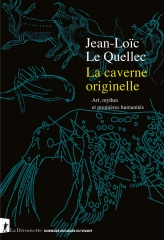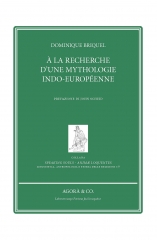 Audrey Ferlut, Le Culte des divinités féminines en Gaule Belgique et dans les Germanies sous le Haut-Empire romain, 2 vol., 2022, Bordeaux, Ausonius.
Audrey Ferlut, Le Culte des divinités féminines en Gaule Belgique et dans les Germanies sous le Haut-Empire romain, 2 vol., 2022, Bordeaux, Ausonius.
Voilà bien longtemps qu’une monographie d’ampleur consacrée à la religion en Gaule romaine n’a pas été publiée. Il y a eu bien entendu bien des travaux d’archéologues, notamment sur les sanctuaires, et les divers recueils de travaux initiés par le projet FERCAN, mais la dernière synthèse importante date déjà de 2002 (La Religion en Gaule romaine de William Van Andringa, Paris, Errance). Autant dire que l’ouvrage d’Audrey Ferlut, traitant d’un sujet d’importance (les déesses), est le bienvenu.
Il s’ouvre pourtant quasiment sur ce qu’on pourrait qualifier de bévue d’une part, et d’approximation d’autre part. La bévue se trouve p. 18 du vol. 1, quand, dans son introduction, l’autrice écrit: «Aucun texte antique ne fait mention d’une déesse de Gaule». C’est bien entendu faux, le plus ancien étant le texte de César, qui parle du culte de Minerve chez les Gaulois (document que l’autrice invoque cependant plus loin)1. Ce qui est vrai est qu’il n’y a aucun texte concernant spécifiquement la zone étudiée.
L’approximation se trouve dans la partie consacrée aux divinités gallo-germaniques (vol. 1, p. 35-90), dans laquelle l’autrice considère toujours Maia comme indigène. Or Maia est bien connu de la mythologique gréco-romaine. Il est vrai que l’on dispose pour la Belgique et les Germanies d’inscriptions particulières qui montrent que la déesse latine a recouvert une déesse indigène. Ainsi à Metz, une stèle honore les «déesses Maiiae» (vol. 2, n°480), triplement typiquement celtique de la divinité, tandis qu’à Dampierre (vol. 2, n°481), à Gemersheim (n°483), à Ettlingen (n°487), à Oberwesel (n°488) et Neustadt (n°490), la déesse est nommé Maiia. Il faut ici rappeler le travail de Václav Blažek, qui a montré que la déesse Irlandais Macha et la latine Maia partagent un étymon commun2. Que la déesse latine ait remplacé une déesse gauloise au nom quasiment similaire me paraît très probable3. Cependant, il eût fallu le démontrer notamment en examinant les modalités de cultes et leurs différences par rapport à ce qui existe en Italie.
Cela-dit, à la décharge de l’autrice, son ouvrage ne concerne pas du tout la mythologie, mais bien les cultes en eux-mêmes. Il n’est donc pas vraiment question de caractériser les divinités individuellement, mais de voir comment la société dans son ensemble leur a rendu un culte. Aussi, par exemple n’est-il pas question de n’étudier que les divinités indigènes. Et à ce titre, il s’agit bien d’un ouvrage précieux, qui montre bien, en s’appuyant sur un corpus particulièrement volumineux (1338 fiches, qui remplissent la quasi-totalité du volume 2!) que les choses sont tout sauf simples: alors même qu'elles sont voisines, aucune des trois provinces abordées n’est semblable à l’autre, ni dans le temps, ni dans l’espace. Si l’autrice relativise la prétendue «résurgence» des cultes indigènes au IIIe siècle après J.-C., elle ne tombe pas dans l’excès de William Van Andringa, qui ne voyait plus rien d’indigène ou presque dans ces cultes: au contraire, sous des dehors latins, on voit bien qu’en plus du nom de certaines divinités, tout à fait gaulois ou germanique, et de certains éléments iconographiques, une partie du formulaire des inscriptions peut être d’origine locale, et notamment l’expression «ex imperio ipsarum».
L’analyse sociologique est aussi très intéressante: bien des dédicants sont des soldats, qui peuvent être d’origine très diverses, et parfois lointaines. Cela ne les empêchent pas de vénérer des divinités tout ce qu’il y a de plus indigènes. L’inverse est tout aussi vrai: en témoignent la précocité et la vivacité des cultes de Cybèle et d’Isis dans les Germanies, tandis que les cognomens de certains dédicants à Isis semblent bien celtiques.
On l’aura compris: par l’important travail de classement et d’analyse des documents, qui débouche sur des résultats fins, et par la publication de ces documents eux-mêmes, avec description des monuments, établissement du texte latin et traduction en français, l’ouvrage d’Audrey Ferlut s’avère tout à fait indispensable à l’étude des religions en Gaule romaine.
Patrice Lajoye
1Mais Ceres et Diane sont aussi mentionnées dans des scholies et gloses aux Satires de Juvénal (I, 44 et III, 320) ; Diane encore et Cybèle le sont dans la Passion de saint Symphorien (3 : Diane y reçoit l’épithète de Trivia) ; Minerve et Diane dans la Vie de saint Éloi (II, 16) ; Diane seule dans la Passion de saint Marcel et de saint Anastase, dans la Vie de saint Taurin, ainsi que dans l’Histoire des Francs de Grégoire de Tours (VIII, 15) ; Vénus et Minerve dans la Vie de saint Martin de Sulpice Sévère (22, 1) ; Minerve dans la Passion de saint Marcel et dans la première Passion de saint Tibère d’Agde (10) ; Vénus dans la Vie de saint Front de Périgueux (6). Il y en a sans doute d’autres encore.
2Václav Blažek, « Celto-Slavic Parallels in Mythology and Sacral Lexicon », in Séamus MacMathuna and Maxim Fomin, Parallels between Celtic and Slavic, Coleraine, 2006, p. 75-86.
3Patrice Lajoye, « Celto-Slavica. Essais de mythologie comparée », Études celtiques, XXXVIII, 2012, p. 197-228, ici p. 220-221.

